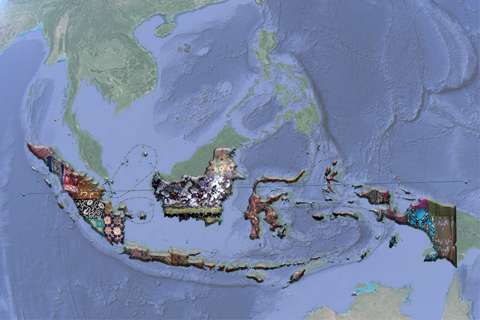
This is the app from the activities of Sobat Budaya community collecting and digitizing the collection of Indonesian traditional Batik.
Batik is one of the world most recognized Indonesian heritage. The "batik" has been existed since very old time and it has been embedded in Indonesian culture - that is why in its broadest sense, the process of the batik cannot be reduced into merely steps of the ornamentations. The materials incorporated in it also play an important role, including the fabric, the organic colorings, the wax (although it happens that some ethnic groups in Indonesia do not use wax a material for the crafting batik), and so on.
Batik textiles emanate beautiful ornamentations and pictures with painting techniques by resisting wax (or other non-permanent cohesive) after the dyeing processes. As the largest ethnic group in Indonesia thus Javanese batik is the most well-known in the world of traditional fashion. Nonetheless, attaching batik merely to Javanese culture becomes superficial for batik has been there in a lot of corners of society across the Indonesian Archipelago. Endeavors understanding Indonesian culture would reveal the usage of clay as other way instead of wax to produce batik, e.g.: Western Sumatera, while in depth observation of Banjar People (Southern Kalimantan) would reveal how the nobles protecting themselves from the evil spirit by wearing Sasirangan fabric instead of the common realization of Javanese batik affine to the living keraton (Javanese palace). Thus, batik is a living artifact that has been attached to the minds of the people living in Indonesian Archipelago from generations to generations collectively. How they craft, wear, and appreciate the batik become so diverse, and acquisition of Science and Technology in detail research for mapping their appreciation to the motifs depicting by their respective "batik" in their evolutionary, innovative, and statistical proximity is thus very interestingly visualizing Indonesian people.
"Phylomemy" is like a sort of "map" of "phylogeny" in biology, but it is about cultural information in stead, made based upon the mathematical and geometric aspects of batik design. The traditional Indonesian cloth designs are analyzed by calculating mathematical and statistical aspects within. The variables are the employment of dominant colorings and the fractal dimensions computed from respective motifs. The geographical aspects show how each social group evolved and innovated the fabric visual aesthetics specifically in each region in the archipelago drawn from generations to generations. All of variables play the role as meme – the elementary unit of information yielding the complex cognitive aspects of human culture while the phylomemetic shows the “kinship” among all, just like the DNA sequences in biological structures. The “kinship” among collective cognitive systems from places to places is reflected in the branches and the leaves of the phylomemetic tree.
This map is brought to you by Bandung Fe Institute, the research center for complexity in Surya University.

